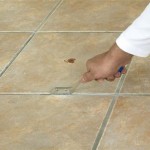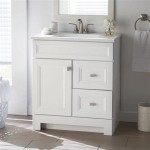Replacing a Sink Trap in the Bathroom
A bathroom sink trap is a crucial plumbing component designed to prevent sewer gases from entering the home. It's that U-shaped pipe located beneath the sink. Over time, sink traps can develop leaks, clogs, or simply wear out, necessitating replacement. While calling a plumber is an option, replacing a sink trap is a relatively straightforward DIY project that can save time and money.
Tools and Materials Needed
Before beginning the replacement process, gather the necessary tools and materials. Having everything on hand streamlines the process and prevents interruptions.
- New sink trap (ensure it's the correct size for your sink)
- Slip-joint pliers
- Bucket or pan
- Old towels or rags
- Plumbers putty (for certain types of drain connections)
- Teflon tape (also known as PTFE tape)
- Flashlight (optional but recommended)
Preparation
Proper preparation minimizes mess and simplifies the replacement process. Taking a few precautionary steps can make a significant difference.
- Place the bucket or pan beneath the sink trap to catch any residual water.
- Spread old towels or rags around the work area to protect the cabinet floor from spills.
- Turn off the water supply to the sink. This is typically done using the shut-off valves located beneath the sink.
Removing the Old Trap
Removing the old sink trap requires careful handling to prevent damage to the connecting pipes.
- Loosen the slip nuts that connect the trap to the drain pipe and the tailpiece extending from the sink drain. Slip-joint pliers provide the necessary grip and leverage.
- Carefully unscrew the slip nuts by hand. If they are particularly tight, use the pliers cautiously to avoid stripping the nuts.
- Once the nuts are loosened, gently lower the old trap into the bucket to catch any remaining water.
Cleaning the Drain Connections
This step is critical for ensuring a proper seal with the new trap. A clean connection point is crucial for a leak-free installation.
- Use a rag or an old toothbrush to clean the threads on the drain pipe and the tailpiece. Remove any old putty, debris, or mineral buildup.
- Thoroughly dry the threads before installing the new trap. This helps the new connections seal properly.
Installing the New Trap
Installing the new trap requires careful alignment and proper tightening of the connections.
- If required, apply a small amount of plumber's putty to the drain flange where the new trap will connect. This helps create a watertight seal.
- Wrap Teflon tape clockwise around the threads of the drain pipe and the tailpiece. This provides an extra layer of sealing and prevents leaks.
- Carefully hand-tighten the slip nuts onto the new trap, ensuring proper alignment. Avoid overtightening, which can damage the plastic nuts.
- Use the slip-joint pliers to give the nuts a final, gentle tightening. Avoid excessive force, as overtightening can lead to cracks.
Testing for Leaks
Testing for leaks is an essential final step to ensure the new trap is properly installed.
- Turn the water supply back on and observe the connections for any signs of leaks.
- Run the water for several minutes, checking both the drain and the slip nut connections for drips.
- If any leaks are detected, tighten the connections slightly. If leaks persist, recheck the alignment of the trap and ensure the slip nuts are properly seated.
Post-Installation Tips
Following installation, some additional tips can help maintain the functionality and longevity of the new sink trap.
- Periodically check the trap for leaks and tighten connections as needed.
- Avoid pouring grease or oil down the drain, as these can solidify and cause clogs.
- Use a strainer to catch hair and other debris that can accumulate in the trap and lead to blockages.
Troubleshooting Common Issues
Occasionally, some issues might arise even after a seemingly successful installation. Here are a few common problems and potential solutions.
- Persistent leaks: Double-check the tightness of all connections and ensure proper alignment of the trap components. If leaks persist, the trap itself might be faulty and require replacement.
- Slow drainage: This could indicate a partial clog further down the drain line. A plunger or drain cleaner might be necessary to address this issue.

How To Install P Trap And Bathroom Sink Drain Piping Easy Installation For Beginners

How To Replace A Sink Stopper Quick And Simple Home Repair

Replace A Trap And Add Cleanout Fine Homebuilding

How To Install The P Trap Under A Sink Dummies

Bathroom Sink Plumbing Installation Diy Montreal

How To Replace A Drain In The Bathroom Sink Right Way

How To Install A Pipe From Sink Drain Wall Ehow

Bathroom Sink Plumbing Installation Diy Montreal

How To Fix Or Replace A Leaky Sink Trap Hometips Drain Repair Replacing Kitchen

Bianchina Swapping Out A Bathroom Sink Drain And Pop Up
Related Posts







